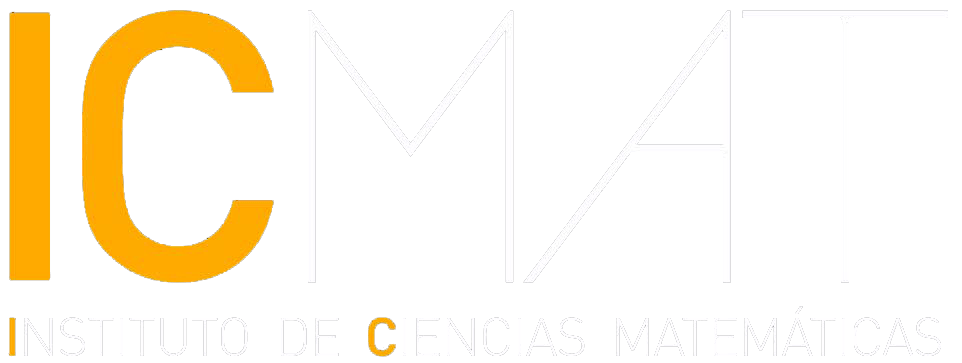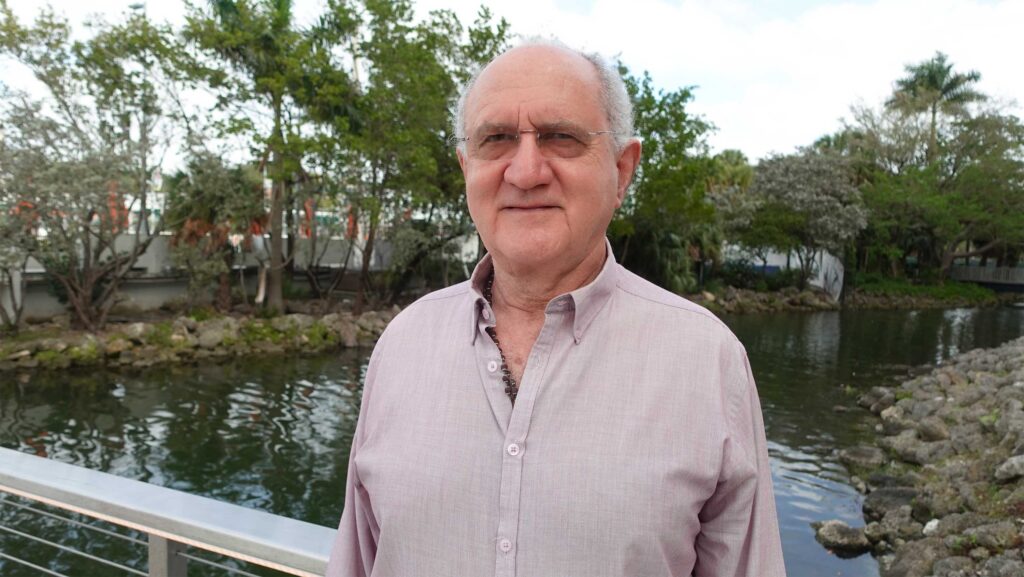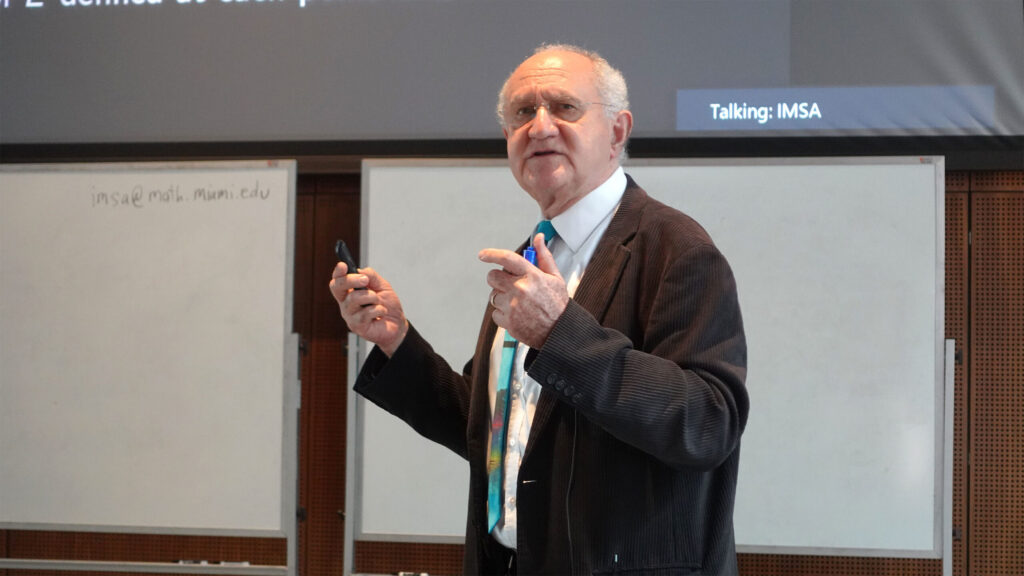Enhancing mathematical bridges between Spain and Latin America programme
Interview with José Seade, IMSA Latin American Mathematics Research Prize 2024 – Category: Latin American Mathematical Leadership
Mathematician José Seade Kuri (National Autonomous University of Mexico, UNAM) is recognised in the Latin American scientific community not only for his academic career, but also for his involvement in institutional and educational issues. PhD. from Oxford University (UK) in 1980 under the supervision of Nigel Hitchin, he is an expert in the areas of topology, singularity theory and dynamical systems, to which he has made important contributions, with practical applications in other scientific branches.
He currently combines his academic work as a professor and researcher at the National Autonomous University of Mexico (UNAM), of which he has been a member since 1980, with his position as president of the Mexican Academy of Sciences, to which he acceded in 2023 after three years as vice-president. He was also president of the Mexican Mathematical Society between 1986 and 1988, during which time he promoted projects such as the Mexican Mathematics Olympiad and the EMALCA Mathematics Schools, activities to promote mathematical talent. He has also been coordinator of the Solomon Lefschetz International Laboratory (CNRS, CONACYT and UNAM), director for seven years of the Casa Matemática Oaxaca, a subsidiary of BIRS Canada, and director of the Institute of Mathematics at UNAM from 2014 to 2022, among other positions.
His extensive career and influence in Mexican and Latin American mathematics have earned him the Latin American Mathematics Research Prize 2024, in the category of Latin American Mathematical Leadership, in its first edition. The prize was awarded by IMSA (Institute of the Mathematical Sciences of the Americas), with which the ICMAT collaborates. The award ceremony took place within the framework of the Mathematical Waves Miami conference series, held at the beginning of the year at the University of Miami (USA).
Laura M. Iraola (ICMAT)
How did you enter the world of mathematics?
I realised late in life that I liked mathematics, when I finished high school in Mexico. I always liked it, in fact, as a teenager, I only had fun with maths at school. However, I decided to go to university to study Actuarial Science, which is a career in Mexico that opens up more job opportunities, but I only lasted two weeks; I rushed into Mathematics.
How did you end up doing research?
My passion for mathematics really began when I arrived at the National Autonomous University of Mexico (UNAM). I didn’t know that there was the possibility of a research career, but there I met great professors like Alberto Verjovsky and Santiago López de Medrano, who talked to me about ideas, taught me how to think, and steered me towards research.
And why did you decide to do research in the area of algebraic topology?
Because when I was an undergraduate, I went on a trip with my older brother to Oxford (UK) and I fell in love with the city. That’s when I decided I was going to do a postgraduate degree there because Michael Atiyah, one of the great mathematicians, was a professor there. I managed to study there, not directly with him, but with his group.
And what attracted you to this area?
I really liked the way of thinking in topology. In Mexico I had very good professors and the best ones belonged to this area, which motivated me a lot. During my PhD, however, I changed fields. I started in topology, but I ended up in a combination of singularity theory, dynamical systems and what are known as Klein groups, groups of transformations. Those are the areas I’ve been involved in for the rest of my life.
Which of your results would you keep?
Many people have heard of the famous Julia and Mandelbrot sets, where fractals appear. They are part of a theory known as the theory of rational functions in a complex variable, which is a sister to the Klein group theory I mentioned earlier. About Klein groups, basically what I studied are the transformations of the plane that are known as inversions. It is a theory analogous to Mandelbrot’s, but in several variables, in more dimensions. In this area, together with my research group in Mexico, we have obtained interesting results.
What are you currently working on?
On several papers, both in Klein group theory and singularity theory. One of them, roughly speaking, seeks to understand the geometry of singular varieties. A differentiable variety is a space that, piecewise, looks as if it were a smooth space, as if it were a Euclidean space. If you’re looking at a sphere [variety of dimension 2], each point has an environment that’s almost like a disc [a piece of plane, Euclidean space of dimension 2]. It’s a little bit curved, but basically, it’s a disc, it’s homeomorphic to a disc. A variety, in general, has that property. Every point has an environment which is as if it were a disk of the corresponding dimension. There are spaces that are like that in almost all their points, but not in all of them. An example is the hourglass: at almost any point, the hourglass is a variety, but at the vertex, no, there it does not have an environment that looks like a disc, no matter how small its environment is. That is an example of a singular variety.
The aim is to study these singular varieties, to give them properties, to be able to compare them, to know whether two varieties that look different are different or only appear to be different. That generates very difficult problems and the way to study them is by introducing invariants, things that are easy to compare and that give you information about them. I work on studying invariants of singular variables.
Dedication to the scientific community in Latin America
You are president of the Mexican Academy of Science from 2023, after three years as vice-president, what made you apply for this position?
Members of the scientific community in Mexico felt that I could help, that I had the profile to be president. I thought it was a good opportunity to do things for Mexico and I decided to join the Academy. First, for three years, I did so as vice-president and, once this period was over, I became president for another three years.
What are the objectives that you set for yourself to develop during this term of office?
When I became vice-president, the situation was very different from what it is today. At that time the academy had a very good budget and many interesting programmes for the country, so the idea was to strengthen its activity. However, shortly after, when I was in charge of the vice-presidency, the government cut the budget. That served as training for me to be in charge of a totally contracted Academy. Now we are looking at how to get it to regain its national presence and become a driving force for science in Mexico.
How is the scientific community coping with this situation?
There is a lot of enthusiasm and support from the community, also different institutions are giving us partial support, thanks to which we are surviving and being able to rebuild the situation. I am optimistic, we don’t have any money yet from the government, but there are promises that there will be. At the end of the day, every crisis is an opportunity and I am sure we will come out stronger.
What is the situation of research in Mexico?
It is tough and very difficult, but I think in general there is optimism about what is to come. The reduction in funding for science in general is a phenomenon that is happening all over Latin America, with the exception, perhaps, of Brazil, with President Lula.
In Mexico we have a solid and good mathematical community. And if I compare what we have now with what we had when I was a student a few decades ago, it is a different universe. It is much stronger, there are research groups in all parts of the country, there are mathematicians who stand out, there are good courses… Now, although it is good for students to go abroad, it is not necessary, whereas in my time there was no such option.
There is a clear improvement, but it is also true that we are a long way from where we could be if we had real support, which can be seen, for example, in the large number of excellent Mexican and Latin American scientists who stay in other countries.
IMSA Latin American Mathematics Research Award 2024 for Latin American Mathematical Leadership
You have received the Latin American Mathematics Research Prize, awarded by IMSA in its first edition, in the category of Mathematical Leadership, what do you think it recognises?
What does leadership mean? It is difficult to define, it involves many aspects. First and foremost, there has to be good mathematics. Among other things, it is a recognition of my career and research. It has been my lot to play a leadership role, and I have had the good fortune to be close to several great leaders who have influenced me a lot. They all share three fundamental aspects: they do – or have done – mathematics at the highest level, they are – or have been – of great intellectual generosity, and they are committed to promoting mathematics, not only research, but also institutions and individuals.
Throughout my life, I have aspired to do the best mathematics, to support others and institutions, to create infrastructure. For example, very young, at the age of 32, as president of the Mexican Mathematical Society, I was instrumental in setting up the Mexican Mathematics Olympiad, which has left a deep mark on the country. I was also founder and director until 2022 of the Solomon Lefschetz International Laboratory, a laboratory of the CNRS of France, the CONAHCYT (National Council of Humanities, Sciences and Technologies of Mexico) and the UNAM, which served to strengthen the academic relationship with France. In addition, I was director for seven years of the Casa Matemática Oaxaca, which is a subsidiary of BIRS Canada in Mexico.
Above all, I have contributed to the creation of research groups in Mexico and have influenced the mathematical community in other places, mainly Brazil. The sum of all this, among other things, is what has led me to win this award.
And have you also been involved in popularisation projects?
I have not been so much involved in popularisation, but, for example, right now I am coordinating a project in that direction: the publication of a series by Springer-Verlag, one of the leading publishers in mathematics, on geometry and singularity topology. It is going to be a kind of collection or encyclopaedia of eight volumes – of which four have already been published – of more than 500 pages and with contributions from more than 100 experts from all over the world: Spain, Latin America, France, Japan, China, the United States, Russia, Germany, and so on. Each chapter is an introduction to a certain area of singularity theory. The idea is that this collection will be a legacy for future generations.
Enhancing mathematical bridges between Spain and Latin America
Since 2022, the ICMAT is part of IMSAC, a consortium of institutes and organisations that collaborate with the Institute of the Mathematical Sciences or the Americas (IMSA), an institution created with the objectives of promoting the advancement and communication of knowledge in mathematical sciences and fostering dialogue between Latin America, the United States and the rest of the world, with a special focus on the Hispanic community.
This collaboration is one of the ICMAT’s initiatives as part of its commitment to cooperate with academic institutions in Latin America for the development of research and education in mathematics. In this sense, last April, the ICMAT, with the support of IMSA, launched the Enhancing mathematical bridges between Spain and Latin America programme, one of the new actions launched thanks to the achievement of the Institute’s fourth accreditation as a ‘Severo Ochoa’ Centre of Excellence.
This content has been automatically translated. The original text may differ slightly.


